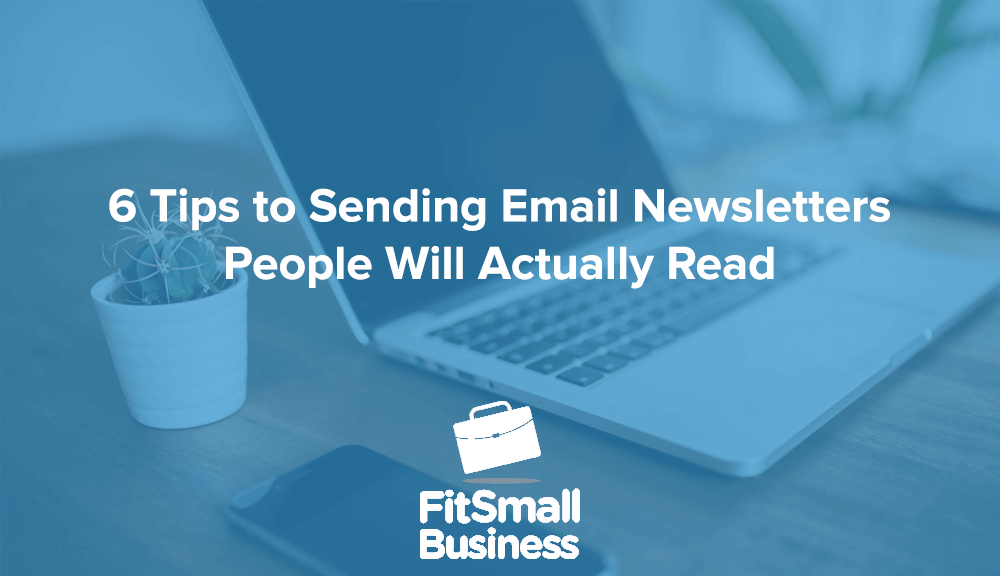You are viewing our site as a Broker, Switch Your View:
Agent | Broker Reset Filters to Default Back to ListHow to Send Email Newsletters People Will Actually Read
June 08 2017

According to one study, users spend an average of 15 to 20 seconds on emails before deciding whether to continue reading it or not. This means you need to create captivating email newsletters if you want to increase the chances of your subscribers engaging with them.
If you're a business planning to use email marketing to reach your audience, we've come up with some tips on how to make your newsletters stand out from a sea of other emails that land in your subscribers' inboxes on a daily basis.
Here are six tips to sending better email newsletters:
1. Use Creative and Catchy Subject Lines
No matter how great the body of your email is, the first challenge is to get your subscribers to open the email. Do this by coming up with interesting subject lines that addresses a reader's "What's in it for me?" mentality. Here are some best practices for coming up with catchy headlines:
- Include numbers and figures, if possible
- Promise a benefit or valuable information
- Use power words and phrases such as "how-to, guide, did you know, and secrets"
- Provide a call-to-action (CTA) in your title, if possible
2. Keep Your Newsletters Short and Simple
Today, the internet has become a major platform where people get news and information on a daily basis. While technology has made information easily accessible to users, the barrage of different materials from the internet has significantly shortened consumers' attention span. When crafting your newsletter, make it long enough to cover the important parts but short enough to be interesting. Try to make it concise and get to the main point of your email right away.
3. Don't Be Overly Promotional
While newsletters are a good platform to inform your subscribers of promos for your brand – hard sells should be kept to a minimum. Ideally, 90 percent of materials you send should be about content relevant to your brand and only 10 percent selling to your customers.
For example, if you're running a travel business, you will want to send interesting information related to travel. This can include off-the-radar travel destinations, tips on scoring cheap flights, travel must-haves for certain destinations or tips on best times to visit particular countries.
4. Don't Flood Your Subscribers' Inboxes
Be clear on how often you will be sending newsletters to your subscribers when they sign up. Are you sending them a weekly, bi-weekly or monthly newsletter? The last thing you want to do is surprise your subscribers with more emails than they are expecting. This will quickly lead to them unsubscribe from your list.
If possible, also give them the option to choose what kind of content they want to receive. Is it your occasional promo notifications or your monthly newsletters? Managing their expectations from the beginning will make it easier to convince them to opt in to your mailing list, as they know what they can expect.
5. Give Your Subscribers an Option to Unsubscribe Easily
Make your "unsubscribe" button easy to find at the bottom of each newsletter you send to your subscribers. Unfortunately, some users are really not fans of newsletters and you want to make sure that you give them an easy option to opt out – they will sign up again if they decide they miss your content. If you don't provide this option, users may mark you as a spam sender. This will hurt your credibility and, if enough users do this, your emails will start ending up in the junk folder.
6. Test If Your Newsletters Are Actually Working
Listen to the actions of your users by putting systems and processes in place to test your opt-ins. This way, you'll have a better idea if your newsletters are being read, and if they're not, you'll be able to figure out which emails have the highest open rates and adjust accordingly.
If you notice that your newsletter open rates are lower than average (~20 percent according to Mailchimp's benchmarks), you may want to mix up your strategy. Blasting out one email newsletter to your full subscriber list is no longer the most effective way to engage your contacts. There is now technology in place that lets you target users based on things like where they are in your sales pipeline, how they have previously interacted with your content, or how long it's been since they have opened an email.
Using CRM software such as Contactually can help you segment your contacts and send them targeted emails based on the information you have about them. These tools have functionalities that allow you to separate subscribers according to their interests and online behavior.
The Bottom Line
Having an established mailing list and sending regular content to your subscribers doesn't mean anything if you're not listening to their actions and determining what kind of content they are interested in and interacting with.
Putting in place great relationship marketing practices is a continuous process and takes a while to achieve. However, once established, you'll be able to build long-term relationships with your subscribers and benefit from their repeat business.
To view the original article, visit the Contactually blog.









